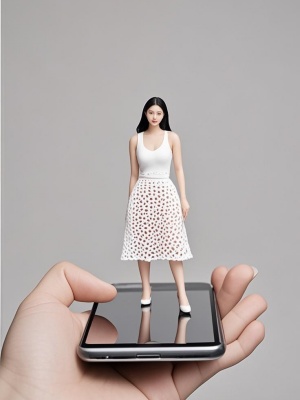Exploring the Vibrant World of Arabic Pop Art
Arabic Pop Art is a dynamic and evolving artistic movement that blends traditional Middle Eastern aesthetics with contemporary pop culture influences. This unique fusion creates visually striking works that resonate with global audiences while maintaining deep cultural roots. In this article, we'll explore the origins, characteristics, and significance of Arabic Pop Art, along with its growing influence in the digital age.
The Origins of Arabic Pop Art
The emergence of Arabic Pop Art can be traced back to the late 20th century when artists began experimenting with Western pop art techniques while incorporating Arabic calligraphy, Islamic patterns, and regional iconography. This movement gained momentum as artists sought to create a visual language that reflected their cultural identity in a modern context.
Key Influences and Pioneers
Several factors contributed to the development of Arabic Pop Art:
- The rich tradition of Islamic geometric patterns and arabesque designs
- The global popularity of Western pop art movements
- Political and social changes in the Arab world
- The digital revolution and new media technologies
Pioneering artists like Shadia Alem and Lulwah Al Homoud helped establish the movement by blending traditional Arabic elements with contemporary pop aesthetics.
Characteristics of Arabic Pop Art
Arabic Pop Art distinguishes itself through several defining features that set it apart from other art movements:
Visual Elements
The style typically incorporates:
- Vibrant, bold colors inspired by regional landscapes and textiles
- Arabic calligraphy used as both text and visual element
- Repetition of cultural symbols and motifs
- Collage techniques combining traditional and modern imagery
Themes and Messages
Common themes in Arabic Pop Art include:
- Cultural identity in a globalized world
- Social commentary on contemporary issues
- Reinterpretation of historical narratives
- Celebration of regional heritage
Arabic Pop Art in the Digital Age
The digital revolution has significantly impacted Arabic Pop Art, with many artists now creating works using AI art tools and digital platforms. This technological shift has allowed for:
New Creative Possibilities
Digital tools enable artists to:
- Experiment with complex layering of traditional and modern elements
- Create interactive and animated artworks
- Produce limited edition digital prints
- Collaborate across borders more easily
Challenges and Solutions
The table below outlines common challenges in Arabic Pop Art creation and potential solutions:
| Challenge | Solution |
|---|---|
| Balancing tradition and modernity | Using digital tools to reinterpret traditional elements |
| Reaching global audiences | Leveraging social media and online galleries |
| Preserving cultural authenticity | Collaborating with cultural historians |
| Monetizing digital art | Exploring NFT markets and limited editions |
The Future of Arabic Pop Art
As the movement continues to evolve, several trends are emerging:
Growing International Recognition
Arabic Pop Art is gaining visibility in major art fairs and exhibitions worldwide, with collectors showing increasing interest in works that blend Eastern and Western aesthetics.
Technological Integration
More artists are incorporating AI image generation and augmented reality into their creative process, pushing the boundaries of what defines Arabic Pop Art.
Cultural Preservation
The movement plays an important role in documenting and preserving cultural heritage while making it accessible to younger generations through contemporary visual language.
Conclusion

Arabic Pop Art represents a vibrant intersection of tradition and modernity, offering unique perspectives on cultural identity in our globalized world. As the movement continues to evolve with technological advancements, it promises to deliver even more innovative and thought-provoking works. For those interested in exploring similar digital art transformations, check out our gallery of AI-generated artworks that showcase how technology is reshaping artistic expression across cultures.
Whether you're an art enthusiast, collector, or creator, Arabic Pop Art offers a fascinating window into contemporary Middle Eastern creativity that bridges past and present, local and global, traditional and cutting-edge.